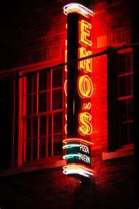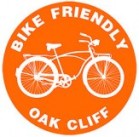Story By: Rudolph Bush
Dallasnews.com
Yesterday, I asked urban designer Patrick Kennedy – the man who has lived car free in Dallas and survived to write about it, for his take on the city’s bike lane controversy.
Patrick is a strong proponent of providing transportation choices to residents, something City Hall says is its vision of the future.
Here is Patrick’s response to my request for comment.
Well, there are a few issues at hand. From the way I understand it the time and delay really stem from the transportation committee, which is hesitant to lose any traffic lanes dedicated to cars. Meaning, it isn’t just as simple as re-striping existing roads whenever they’re due for re-painting, which would be the cheap, logical, and expedient thing to do in the appropriate locations.Second, it strikes me as disingenuous to throw numbers around for an entire system buildout that could take who knows how long or how many different projects it would entail. The slow down makes the study and planning effort look a bit like a sham, which is a real waste of money. It should also be noted that I’ve never seen as many people at a public kickoff as with this bike plan. People were excited.
Contrast the way the city is operating here with how Fort Worth has been enacting bike lanes – incrementally and effectively. I find it amazing that the Better Block Project was invented in Dallas, yet there is no evidence of results from those events. Meanwhile, the city of Fort Worth made those changes permanent.
This has an economic development component to it as well. The Magnolia Avenue corridor’s sales receipts have jumped from (and if I remember the numbers correctly) $2 million last year to $11 million in 2011. It was simple re-striping, one street at a time. Meanwhile, as I joked on twitter Monday, we’re spending how much on Calatrava to redesign a bridge (which as the existing Calatrava Bridge suggests, he’ll probably just copy his own design again (see: Reggio Emilia, Italy)), a silly idea and engineering study for a Ferris Wheel, etc. etc.? If they think that is economic development, then I have another bridge to sell them.
Part of economic development is being cool, which is invaluable. In fact, that is probably the biggest element to long-term economic success, in attracting businesses and talented individuals. They want to go where it is cool, where it matches their lifestyle. The bike and its relationship to what is cool, mostly through Millennial generation nostalgia, can’t be overlooked. In the same way that Boomers saw James Dean and cars as a form of freedom, I really think my generation and younger, those dependent upon mom or the school bus to drive us everywhere growing up, saw the bike as our independence.
When people have choice in transportation and can make their own decisions rationally, based on their particular needs for a particular trip, that makes a truly “smart city.” It builds intelligence into the operating system by empowering the users if there truly are rational options. Biking, like many other forms of transportation, is virtually impossible here, which is expressed in the numbers of people who actually do it.
Another mistake is to make transportation decisions based on existing land use and density. For example, everything is far apart and rather inconvenient for anything but the car. So the ignorant use this, saying, “Well, everything is too far apart to bike.” Of course, it is. Because the transportation system is built only for the car, so the land uses and development patterns respond in kind. If you provide adequate infrastructure for other forms of transportation, the city and the real estate market will adapt.
Now look at the cities that everybody is dying to live in, be in, visit: New York, Copenhagen, Vancouver, Barcelona. These are cities that have been focusing not just on bicycling, but on balancing transportation, with legitimate choices in modes and routes of transportation. We like to throw around the term “world class,” but those are really world class cities. They don’t need to puff their chest and boast about it as some superficial fabrication.





















